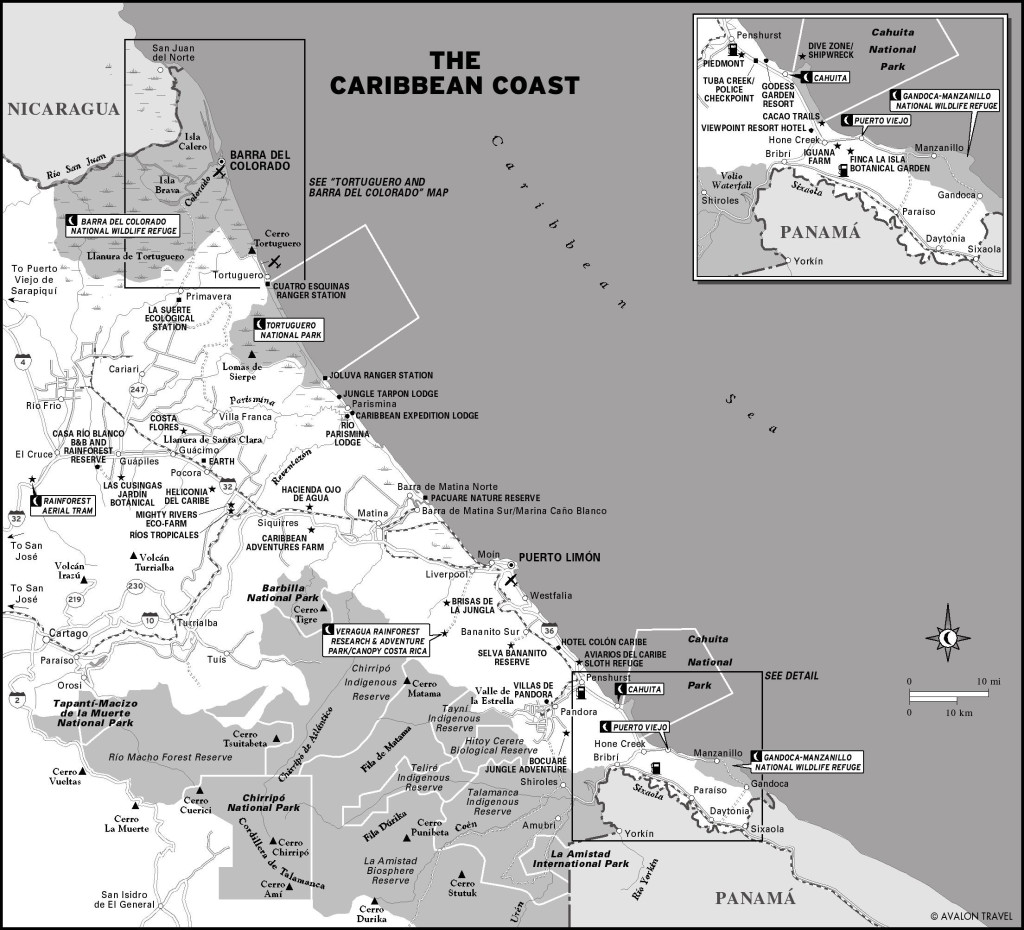
The Caribbean Coast
In 1502, Columbus became the first European to set foot on this coast when he anchored at Isla Uvita on his fourth and last voyage to the New World. Twenty-two years later, Hernán Cortés mapped the coast. The records left by early Spaniards tell of contact with indigenous people: subsistence hunters, farmers, and skilled seafarers who plied the coastal waters and interior rivers in carved longboats (Cortés even mentioned Aztec traders from Mexico visiting northern Costa Rica in search of gold). The indigenous culture was quickly destroyed, however, by the conquistadors. Later it was also the haunt of rumrunners, gunrunners, mahogany cutters, and pirates, mostly British, attracted by the vast riches flowing through colonial Central America. Between raids, buccaneers anchored along the wild shorelines, where they allied themselves with local indigenous people. Because of them, the Caribbean coast was never effectively settled or developed by the Spanish. Today, the port of Puerto Limón, along with its sister port of Moín, is the chief driving force of the urban economy.Cacao was grown here in the late 17th century and was Costa Rica’s first major export. Despite this, the region remained virtually uninhabited by Europeans until the Atlantic Railroad was built in the 1880s and a port at Limón was opened for coffee export. Significant numbers of Jamaican laborers were brought in.In 1882 the government began to offer land grants to encourage cultivation of bananas. Plantations prospered until the 1930s, when banana crops were hit by disease. With the demise of the banana industry, the region went into decline. During the 1960s, plantations were revived, and the industry again dominates the region’s economy.
Today, the port of Puerto Limón, along with its sister port of Moín, is the chief driving force of the urban economy. Beyond the city’s hinterland, most people make their living from farming or as plantation laborers. Small-scale fishers eke out a living from the sea, and families cling to a precarious living growing cacao (in 1979 the Monilinia fungus wiped out most of the commercial crop). Increasingly, however, locals are being drawn into the tourism industry as guides and hotel workers.
Excerpted from the Ninth Edition of Moon Costa Rica.